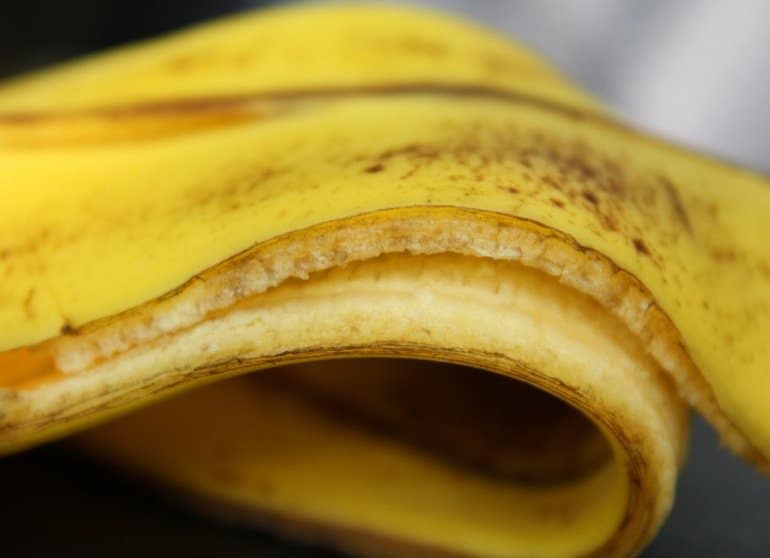As soon as it’s done, it’s in the trash! However, it is not for lack of reminding it: the banana peel is very useful. Whether it’s for shining leather shoes or for whitening teeth, there is no shortage of uses for it. Also, some will not be surprised to learn that it can also be used in the garden. In fact, many food scraps can be used as fertilizer or take care of the garden (coffee grounds, eggshells…).
Contents
Why use banana peel in your garden?
Banana peel is a gold mine of minerals and nutrients that plants love. It contains potassium, iron, calcium and magnesium, nitrogen, vitamins, manganese, copper and antioxidants. It is therefore a very rich organic waste. The banana peel is therefore a good fertilizer for garden plants. It gives them vitality, stimulates their rooting and brings growth and resistance to diseases, but its uses do not stop at this fertilizing power! Here is its wide range of uses.
1) Banana peel to enrich the garden soil

All year round, banana peel can be used to improve the soil, especially for flower beds and vegetable gardens. When planting a rosebush, burying a banana peel underneath the plant will encourage the growth of beautiful flowers. Tomato and eggplant plants, which are very greedy for nutrients, also love it. It can even be used in soil that is not yet cultivated (for example in winter) to prepare it for planting in spring. To do this, cut the skins into small pieces and mix them into the soil. You can also bury a whole skin if you dig a little deeper. This could attract nocturnal mammals of all kinds.
2) A peel to put in your compost or vermicompost bin
Its potassium and nitrogen improve the quality of the compost, as they are both very useful for many plants. The skin will also provide iron and magnesium, which are crucial for the micro-organisms that make for good composting. For a better decomposition, always take care to break the skins into small pieces. You can also add your whole skins, but always make sure to bury them deeply. Otherwise, it will attract all the weasels and rats in the area.
3) Water your garden plants with banana water

Banana water is an unstoppable way to give tired plants a boost. It’s an effective natural fertilizer that’s free (or almost free), organic and very efficient. By taking advantage of watering to use this very nutritious water, we can indeed accelerate the growth of plants and promote a beautiful bloom. To do this, simply add a few banana peels to buckets of water. Then let it macerate for 2 or 3 days before watering.
4) For successful seedlings
To have beautiful seedlings, you need to feed them well and take good care of them. Banana peels are full of useful nutrients! This will allow them to germinate healthily. Just make sure that the hole where you put your seedlings (about 5 cm deep) is wide enough to accommodate the banana peel lengthwise. Then lay it flat in the trench with the yellow side against the ground. Then place your seeds on top, cover with soil, making sure it stays airy and water.
5) Banana peel as a natural repellent
The smell of the banana peel will scare away certain insect pests such as aphids. To do this, simply chop up the banana peel and bury it at the foot of the plants, under a little garden soil so as not to attract other small bugs. Still to avoid small pests such as codling moth caterpillars or small worms attacking your plants, and especially your fruits in which they love to lodge, no need for chemical pesticides. Simply hang banana peels on your fruit trees to attract them. Then replace the peels once they are infested. You can also wax the leaves of your plants with the white inner side of the banana peel. In addition to dusting the leaves to help the photosynthesis process, this will also provide them with vitamins;
Bonus: Banana peels attract pollinating insects (butterflies, bees, etc.). Yet another reason to consider these organic wastes as a benefit to the garden and not just because they are great natural fertilizers! Chemical fertilizers can go to hell…

